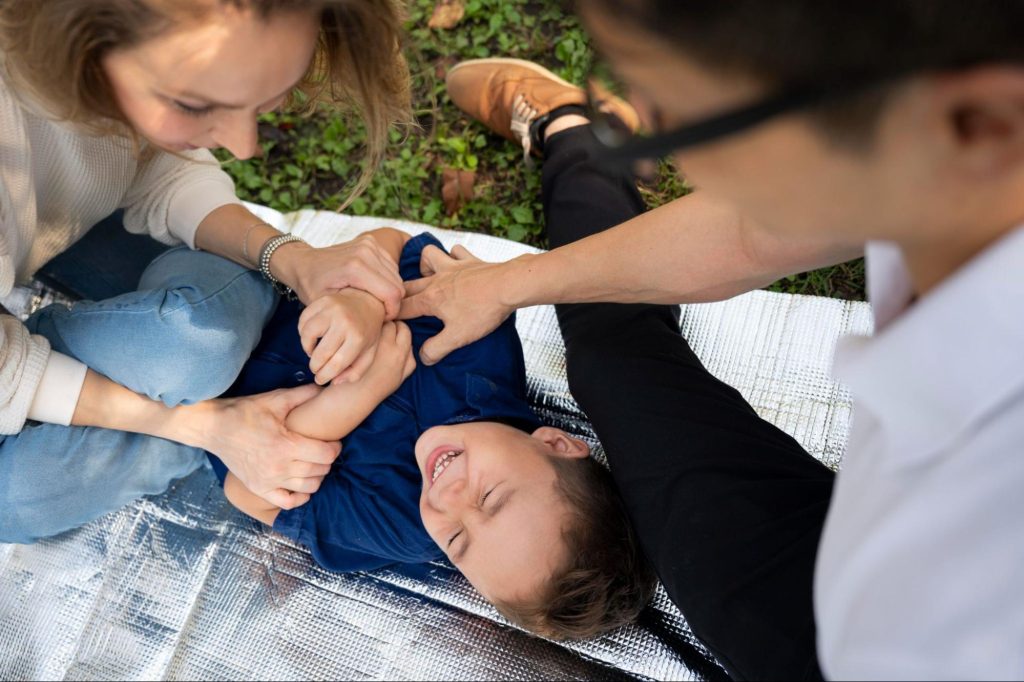
Every parent experiences a primal fear – the fear of their child being in harm’s way. Choking hazards, falls, and unexpected medical emergencies can strike at any time. But in the face of these frightening situations, there’s a powerful tool parents can possess: knowledge of CPR. CPR, or Cardiopulmonary Resuscitation, is a set of lifesaving techniques that can keep oxygenated blood flowing to the brain and vital organs until help arrives in an emergency where a child has stopped breathing or their heart has stopped beating.
While the chances of a child experiencing a cardiac arrest are relatively low, being prepared for the unthinkable can make all the difference. Early intervention with CPR can significantly increase a child’s chances of survival. Here’s why CPR training is crucial for parents:
CPR skills are transferable: The skills learned during CPR training for children can also be applied to adults in an emergency situation. While there may be slight variations in technique depending on age, the core principles of chest compressions and rescue breaths remain the same. By being CPR-certified, parents gain the ability to potentially help not just their child, but any person experiencing cardiac arrest.
CPR is a combination of chest compressions and rescue breaths that helps maintain circulation and oxygen delivery to the body when a child’s heart has stopped beating or they are not breathing effectively. It’s a relatively simple procedure but requires practice to perform effectively. Here’s a breakdown of the two main CPR components:
Rescue Breaths: Rescue breaths provide oxygen to the lungs, which is then carried through the bloodstream to vital organs.
While CPR techniques may vary slightly depending on the age of the child, the core principles remain the same. Here’s a step-by-step guide to performing CPR on a child:
Before approaching the child, ensure it’s safe for you to intervene. Look for any hazards that could put you or the child at risk.
Immediately call emergency services and activate the emergency response system if available.
Gently shake the child’s shoulders and ask loudly, “Are you okay?” If the child doesn’t respond, proceed to check for breathing.
Look for chest rise and fall for no more than 10 seconds. Listen and feel for breaths near the mouth and nose. If the child is not breathing normally, begin CPR.
Place the heel of one hand on the center of the child’s chest, just below the nipple line. Place the other hand on top of the first hand and interlace your fingers. Push hard and fast at a rate of 100 to 120 compressions per minute. Aim to compress the chest by about a third of its depth.
After 30 compressions, tilt the head back and lift the chin to open the airway. Pinch the child’s nose shut and create a seal with your mouth over the child’s mouth. Give two rescue breaths, each lasting about one second. Watch for the chest to rise with each breath.
Continue alternating 30 chest compressions with 2 rescue breaths until help arrives, the child starts breathing on their own, or you become too exhausted to continue.
If an Automated External Defibrillator (AED) is available, use it as soon as possible. An AED is a portable device that can analyze the child’s heart rhythm and deliver an electrical shock if needed to restore a normal heart rhythm.
Performing CPR on an infant requires a slightly different approach compared to CPR for a child. This is because an infant’s body is more fragile and delicate. Here’s a breakdown of the key modifications to remember when performing CPR on a baby:
Focus on Speed and Coordination: While depth of compressions is reduced for infants, the rate of compressions remains the same at 100 to 120 compressions per minute. This emphasizes the importance of maintaining a rapid and smooth rhythm of compressions and breaths during infant CPR.
Here’s an additional tip to remember: If you’re feeling hesitant about giving rescue breaths to an infant, you can focus solely on chest compressions. Studies have shown that even chest compressions alone can be life-saving for infants in some cases. However, if you’re comfortable doing so, providing both chest compressions and rescue breaths is the most effective approach for maximizing the chances of a successful resuscitation.
Once you’ve begun CPR, your focus should be on maintaining uninterrupted chest compressions and rescue breaths until help arrives. Here’s what you should do:
Use an AED if available: If an AED is readily available, use it as soon as possible after starting CPR. AEDs are portable devices that analyze the heart rhythm and can deliver an electrical shock if necessary to restore a normal heart rhythm. Most AEDs provide clear audio and visual instructions to guide you through the process.
Stay Calm and Composed: It’s understandable to feel overwhelmed in this situation. However, remaining calm will allow you to think clearly and perform CPR effectively. Focus on each compression and breath, and take comfort in the knowledge that you are taking steps to give your child the best chance of survival.
In conclusion, learning CPR is a vital skill that every parent should possess. Being equipped to save a life in critical situations can make a significant difference. By taking the time to learn and practice CPR techniques, parents can be empowered to act swiftly and effectively during emergencies. Investing in CPR training for parents is not only about being prepared but also about providing a safer environment for your family and community. Take the step to become CPR-certified and be ready to make a life-saving difference when it matters most.